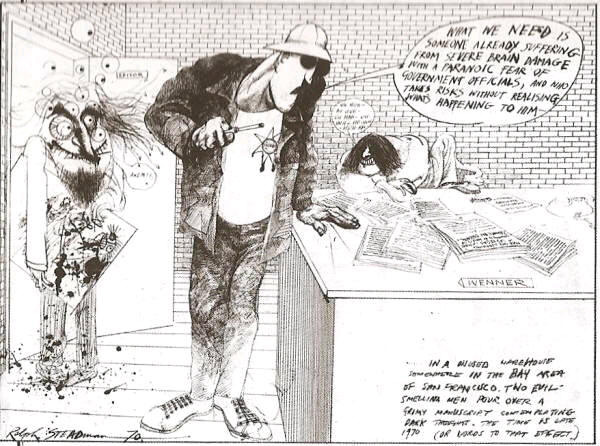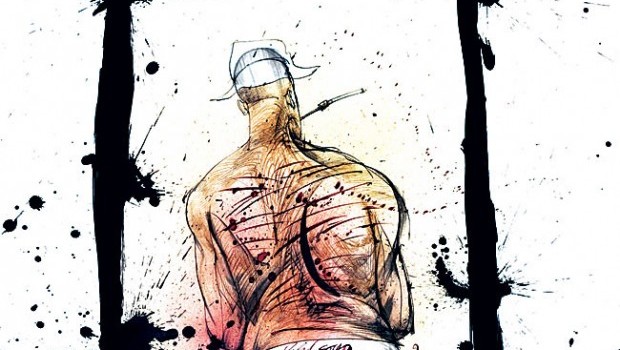THE JOKE’S OVER
 As any literate person of my generation knows, Hunter S. Thompson and Ralph Steadman had an artistic partnership extending over nearly thirty years, only ending with Hunter’s gunshot suicide in 2004. The Joke’s Over is Ralph’s story of that partnership, and the rare friendship with HST that came from it.
As any literate person of my generation knows, Hunter S. Thompson and Ralph Steadman had an artistic partnership extending over nearly thirty years, only ending with Hunter’s gunshot suicide in 2004. The Joke’s Over is Ralph’s story of that partnership, and the rare friendship with HST that came from it.
I first saw the book in Borders a few months ago. I didn’t buy it then because I found the A$60 price greedy and somehow parasitic. But I kept picking it up whenever I was in the book store. Eventually I considered that this was it – the last ever book of Gonzo from the inside – and I bought it using a crumb of the tainted contractual payout from my ex-employer.
The Joke’s Over is not a biography of Hunter’s life. There are many of those, but it seems HST did not cooperate with any of them. This is Ralph Steadman’s story of his professional and personal life with Thompson. If you want to know more about the interior life of the father of Gonzo, this is the book to read.
There is a foreword by Kurt Vonnegut. Thompson’s connections with the greatest of his generation were extensive. Then, right before the first chapter is a quotation:
Don’t write, Ralph. You’ll bring shame on your family.’ Hunter S. Thompson
Sadly, true. As a writer, Ralph is a great artist. The writing is not just poor, it’s lazy. The last few chapters are much better than the first few, as Steadman clearly wore the worst excrescences off his wordcraft, yet he did not trouble himself to go back and re-write the shit at the beginning. HST could produce gibberish worth reading. Steadman cannot. Nonetheless, Ralph’s insights are unique and invaluable for any Gonzo fan.

Steadman saw HST as a man of strength
Jann Wenner, founder of Rolling Stone magazine brought Steadman to Thompson to cover the 1970 Kentucky Derby, after Hunter’s first choice artist couldn’t make it. A partnership was born. It seems that for many assignments Thompson insisted on having Steadman’s original drawings to hand as props, enabling Thompson to write. Thus indirectly Steadman was at least one of Hunter’s muses.
Theirs was a savage perspective, despising, castigating and cruelly lampooning the established, the dogmatic and the powerful. It took savagery and cruelty to do it, and the book is filled with plenty of examples of both. HST and Steadman both acted as though the constraints of normal society just didn’t apply to them. Courtesy was rare. There is a roaring silence about HST’s relationships with his wives and girlfriends. Affection was demonstrated by contact. If Hunter contacted Ralph, usually by fax, it demonstrated that old disputes, arguments and insults were forgotten. If HST didn’t like you or didn’t forgive you, you never heard from him again.

Ralph and Hunter meet at Rolling Stone magazine
I had always known that Hunter S. Thompson was ‘an artist’. But I never considered what that meant. Artists are mad. Artistic vision is an essential and intrinsic part of the creative process, but it’s a killer to carry around 24/7. Hunter did drugs. Some part for pleasure, but I think the weight of it was to blur a perception that unhinged the mind and could poison the soul.
I could never be friends with Hunter, as Ralph Steadman was. I could not share that hellish perception and I could not forgive myself the cruelty it licensed. But if I could resurrect only one 20th century artist it would be Thompson. The joke isn’t over. In 2007, the world needs his perception of our cynical, limited and manipulated lives more than ever.









